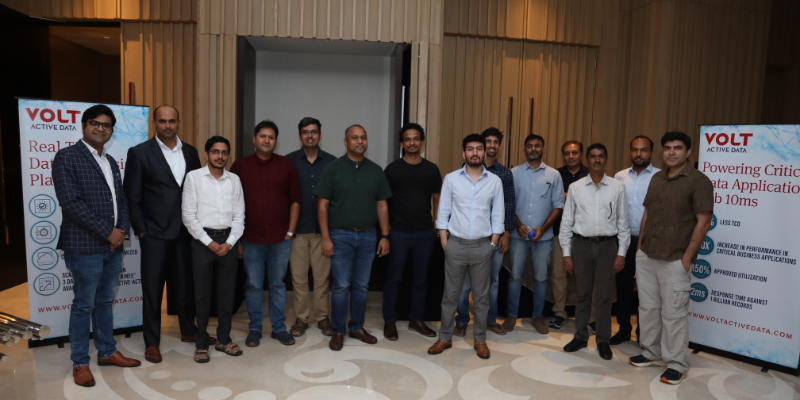
The digital world thrives on concurrency. Applications—from ecommerce giants managing flash sales to mobile gaming platforms handling millions of players—must be able to seamlessly handle a high volume of concurrent requests. But with high concurrency comes great responsibility, the responsibility to ensure low latency, efficient scaling, and cost-effectiveness.
To address these challenges head-on, Volt Active Data, in collaboration with YourStory, recently hosted a roundtable discussion titled ‘Mastering high-concurrency apps: Find effective ways to tackle latency, scale, and costs with ease’ in Bengaluru.
The roundtable explored the critical challenges of high-concurrency applications: latency, scalability, and cost optimisation. Industry veterans, including Sumit Agarwal, AVP, Technology Architecture – Products and Platform, FSS; Kedar Gupte, Associate Director Engineering – Data Platforms, Myntra; Chandramouli Godhandaraman, Senior Vice President II, Technology, HDFC Bank; and Koushik Ramachandra, Software Architect, PhonePe, shared their insights.
Other participants included Pavan Keshavamurthy, Founder & CTO, Handyman, Platformatory; Shankar Umamaheshwaran, VP of Engineering, Myntra; Mahesh Jadhav, VP of Engineering, MPL Gaming; Prakhyath Hegde, VP of Engineering, Cropin; Maruthi Janardhan, Chief Architect, Technology, Exotel; and Sujith Surendran, Director of Engineering, Cashfree Payments. Fahad Khan, Sales Director, and Biplab Banerjee, Principal Solutions Architect, represented Volt Active Data. The session was moderated by Ramarko Sengupta, Senior Editor at YourStory Media.
Optimising with edge deployments
The discussion delved deep into the challenges and strategies for managing high concurrency, ensuring system resilience, and optimising cloud architectures. Participants stressed the importance of concurrency across all infrastructure layers, advocating for a breakdown of scalability problems into manageable pieces with tailored solutions. This included strategies, such as isolated infrastructure, tiered storage, and dedicated processing layers to enhance resilience and prevent outages. Additionally, they highlighted the importance of strong governance, access controls, and a thorough understanding of workload risks as crucial for the effective management of complex systems.
Specific challenges related to edge computing and network optimisation were addressed, with a focus on intelligent systems capable of predicting and efficiently handling workload spikes. They explored strategies for optimising network usage and minimising latency, emphasising the crucial role network optimisation plays in operating at scale, particularly in public cloud environments.
Building scalable and resilient architectures
On cost optimisation strategies, participants discussed leveraging latest technologies, ARM Server Deployments and preemptible instances for cost savings. While organisational policies restricted the use of open-source solutions, participants spoke about creatively leveraging through innovative architectural approaches as the technology offers flexibility and pricing benefits.
Speaking of architectural design choices, database selection, and failover strategies, the tech leads emphasised the importance of cross datacenter replication, redundancy, and failover mechanisms at every layer of the architecture to guarantee continuous service availability. Instances of exploring lightweight state management approaches and robust caching mechanisms as ways to efficiently maintain transaction state and ensure data integrity across distributed systems were also discussed.
Scaling real-time personalisation
Addressing scalability challenges, particularly in real-time personalisation during peak traffic periods, through architectural optimisations and pre-computation techniques, the experts discussed using hardware features and functional strategies, such as zoning imports and load balancing, to eliminate bottlenecks and make the system more efficient.
Real-time computing for retention strategies, personalisation, user profiling, and the technical architecture of platforms like Volt Active Data were brought to the fore, emphasising its suitability for high-concurrency environments and transactional processing.
The roundtable discussion on high-concurrency applications offered valuable insights, but the conversation is far from over. As technology evolves and user demands grow, so too will the need for innovative solutions to manage concurrency, scalability, and cost. With continued exploration of cloud media services, Kubernetes deployments, and other advancements, the future of high-performance apps promises to be even more exciting.
To learn more about Volt, click here.










